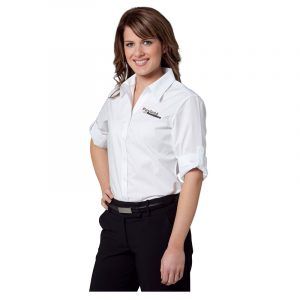If you have face-to-face contact with the majority of your clients, I firmly believe that your uniform is the most valuable form of advertising you will ever use.
Consciously and/or subconsciously, your clients will get a first, and ongoing notion of what type of person you are and what type of business you have from the appearance of your company’s uniforms.
Think of your uniforms as yet another form of marketing and advertising, where your brand persona is being communicated to prospects and customers alike.
Each engagement with your business draws attention to the overall scope of your operations. This can have more impact than outbound marketing materials, as the visitors to your establishment are gaining real-life insights about your brand.
Follow this roadmap to ensure you make the correct decisions when dressing your staff:
1. Select Your Desired Level of “Professional”
On an imaginary spectrum – with professional at one end, and casual at the other – where do you want your business to lie compared to others in your industry?
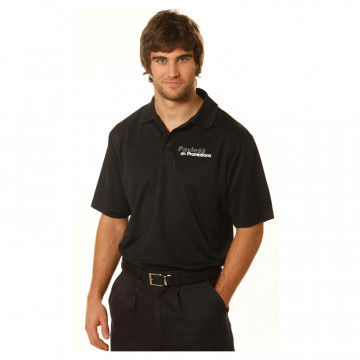 As a general rule, non-professional businesses go to casual, and professional organisations go to formal. If you are a tradie, for example, I highly recommend being the best dressed tradie in your area.
As a general rule, non-professional businesses go to casual, and professional organisations go to formal. If you are a tradie, for example, I highly recommend being the best dressed tradie in your area.
If you are a lawyer, however, consider losing the stuffy suit in favour of a tucked-in polo shirt.
These small changes lead to big differences in first impression. They also pave the way for consistency – it will be easier to maintain the look over time, adding more credibility to your brand image.
- Do you want your customers to feel the need to dress a certain way when visiting your location?
- Should you (or your staff) ever be dressed better (or worse) than your clients?
Both of these questions are ever-evolving notions that will need to be asked many times during the growth of your business. Knowing when to keep it casual with work uniforms, or when to step it up and “dress to impress,” gives you a unique advantage over your competitors.
You can gain a lot of perspective by analysing the way most of your customers and prospects dress when coming to your place of business.
Use the observations to answer these questions:
- Has their appearance changed over time (from their first visit)?
- Do they make an effort to match the level of professionalism of your staff’s work uniforms?
- Are they able to easily identify senior staff and management?
- Does your average client/prospect feel comfortable presenting their needs to any of the staff they encounter, or are they hesitant? (This can be a sign of under-dressed staff who appear to lack the knowledge or professionalism required.)
2. How uniform do you want your uniform?
Do you want all staff wearing the same garments, or just the same colour/style? Are your uniforms top-to-bottom or top (shirt/polo) only?
A great recommendation is to pick 2-3 styles of garment that look great together, and then let your staff choose which garment suits them best from there.
Consistency is always a good idea when it comes to corporate uniforms, but it doesn’t need to mean a lack of options. Giving your staff the ability to express themselves – within the theme of the company’s brand/style – can do wonders for morale and productivity.
Find ways to provide flexibility to your staff for fantastic results.
 When garments need to be identical – Try using variations of colours that are similar to your logo or other marketing materials. Even if the work uniforms are the same (in design and build), slight variations of colour combinations can provide uniqueness. Also consider designating different colours to different roles, departments, or rank.
When garments need to be identical – Try using variations of colours that are similar to your logo or other marketing materials. Even if the work uniforms are the same (in design and build), slight variations of colour combinations can provide uniqueness. Also consider designating different colours to different roles, departments, or rank.
When garment designs can be flexible – If the focus is on style/colour/theme, this is where employers really have the opportunity to get creative. I feel that it’s best to select a few staff uniforms that are acceptable to you, leaving the decision-making to the individuals in your organisation. Keep the colour variations within 3-4, ensuring that at least 2 of the colours strongly match your company logo.
3. Meet the Standards
These days, there are often legal and/or functional requirements of uniforms.
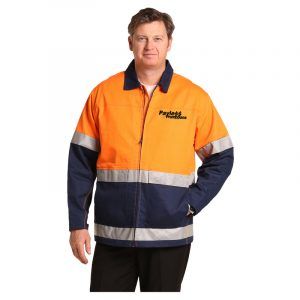 If your garments need to meet Aus/NZ standards, let your supplier know at the beginning. Fire and flame retardant factors, as well as UV resistance, are other elements to also consider at this point.
If your garments need to meet Aus/NZ standards, let your supplier know at the beginning. Fire and flame retardant factors, as well as UV resistance, are other elements to also consider at this point.
- Let your business represent a responsible, compliant culture by adhering to the requirements that apply to your industry.
- Speak volumes to your customers and staff by paying attention to the necessities of the work to be performed, and the safety of those performing it.
Comfortable staff uniforms also lead to happy and productive workers.
Check with your supplier for additional information regarding functionality, legal implications, safety and more, or speak with one of our staff at Payless Promotions. I’m confident that we can address any questions or concerns you have.
4. Choosing the Most Appropriate Material
Choosing the most appropriate material is crucial. This is where you are best to seek advice from your uniform supplier.
- What are the advantages over cotton vs polyester?
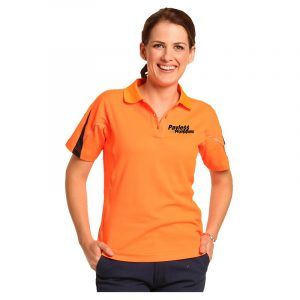
- Can a shirt really be made of bamboo?
- Do terms like ʺeasy careʺ and ʺmoisture wickingʺ mean anything?
- What the heck is Nano-Tech, and would I want a shirt treated with it?
Uniform features have come a long way. Understand the differences and choose the material best for your requirements.
Material can be a sizable factor in reliability, usability and overall value.
Making wise and educated choices, the first time, can extend the life of your investment. Whether you have only a few employees, or a few hundred, picking the right features to include in your corporate uniforms can save you in the long run.
5. Branding vs Promotion
We recommend all uniforms at least have the company name or logo somewhere. But, do you need your mobile number or website plastered across the back?
Consider the likelihood of a potential client actually using this information to contact you. If there is a realistic possibility, then go for it. If not, then maybe something more subtle and stylish is best.
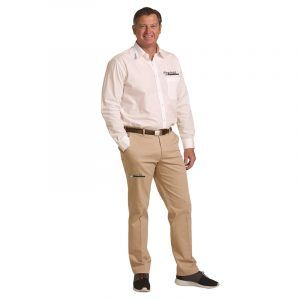 By the time your prospects (or customers) are in a position to see your work uniforms, it’s unlikely that they will need (or benefit from) your contact information on a garment.
By the time your prospects (or customers) are in a position to see your work uniforms, it’s unlikely that they will need (or benefit from) your contact information on a garment.
An exception to this rule, of course, is your logo or company name – these elements can always use additional branding and reinforcement. Phone numbers or other details, however, are less likely to be memorised.
In situations like these, it’s better to opt for other affordable promotional giveaways that your visitors can take with them when they leave – pens, magnets, business cards, etc.
Another consideration is that overdoing it – turning your staff into walking billboards – can be a first impression you don’t wish to set.
Keeping to the essentials (the information prospects expect to see on uniforms, such as business name, logo or motto) can give your business a professional appearance.
6. Stay Current
Buying a uniform is not a once-off or even a 3-year decision – keep your uniforms current, stylish and relevant, even if it means buying less garments or choosing something a little less expensive.
In my opinion, nothing is more off-putting than your staff interacting with clients in an out-of-date, faded shirt.
As it goes with any other symbol of your business, poor-quality elements easily taint your brand’s image. Stay top-notch with your client-facing business assets to maintain the right impression.
Subconsciously, customers will either be impressed or turned-off by the way your staff are presented.
Even the nicest, most knowledgeable employee can have their capabilities overshadowed by a shabby appearance – something that is out of their control when work uniforms aren’t fresh and modern.
Destination Reached
To sum things up, your branded corporate uniforms can be a game-changer, placing you leaps ahead of the competition. Following these 6 critical steps will help you reach your target.
For additional tips or suggestions, feel free to contact me or any of the specialists at Payless Promotions.

